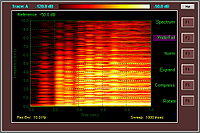
Photo from wikipedia
Charles Koechlin’s Traité de l’orchestration ascribes different dimensions to timbre than those usually discussed in multidimensional scaling studies: “volume” or grosseur, related to extensity (the sound’s perceived size), and intensity,… Click to show full abstract
Charles Koechlin’s Traité de l’orchestration ascribes different dimensions to timbre than those usually discussed in multidimensional scaling studies: “volume” or grosseur, related to extensity (the sound’s perceived size), and intensity, related to loudness. Koechlin also provides volume rankings for orchestral instruments in different registers. Studies show that humans, as well as several animal species, perceive extensity for many sound sources, but none has demonstrated its relevance for musical instruments from different families. To test extensity, samples of seven orchestral instruments equalized in pitch, but not in loudness, were used. Task 1 required participants to order eight sets of samples on a largeness (grosseur) scale from “less large” (moins gros) to “larger” (plus gros). Task 2 required them to quantify the sounds’ largeness compared to a reference sample on a ratio scale. Both studies show that participants share a common extensity perception for instrument timbres of different families that is very similar to Koechlin’s proposed scale. This perception seems to be related to spectral shape and particularly to acoustic energy in the lower frequencies. Perception of this attribute is unrelated to musical training, native language, and the presence of minor hearing loss, which suggests that extensity could be a universal attribute of timbre perception that is useful in orchestration practice and theory.
Journal Title: Musicae Scientiae
Year Published: 2017
Link to full text (if available)
Share on Social Media: Sign Up to like & get
recommendations!